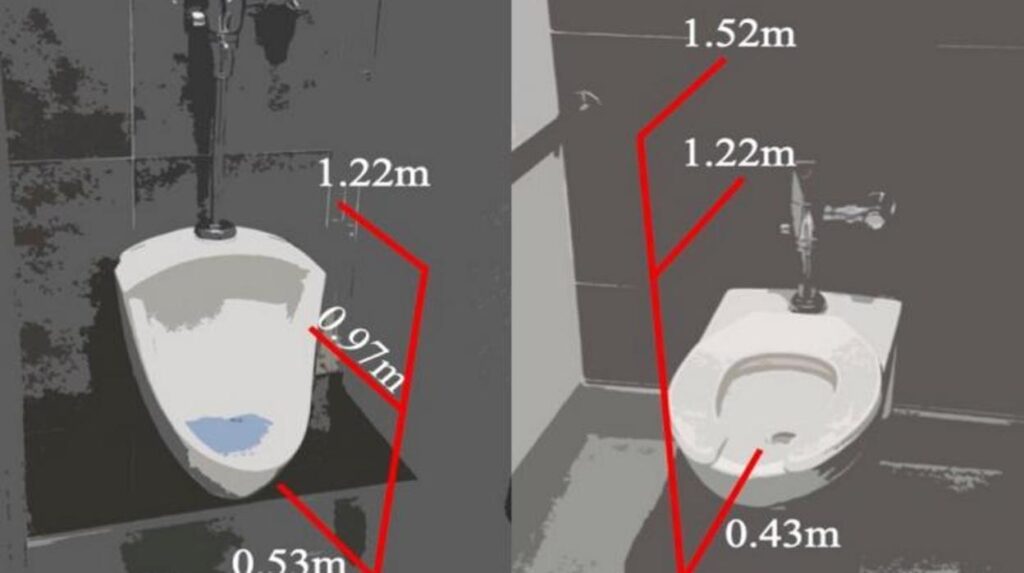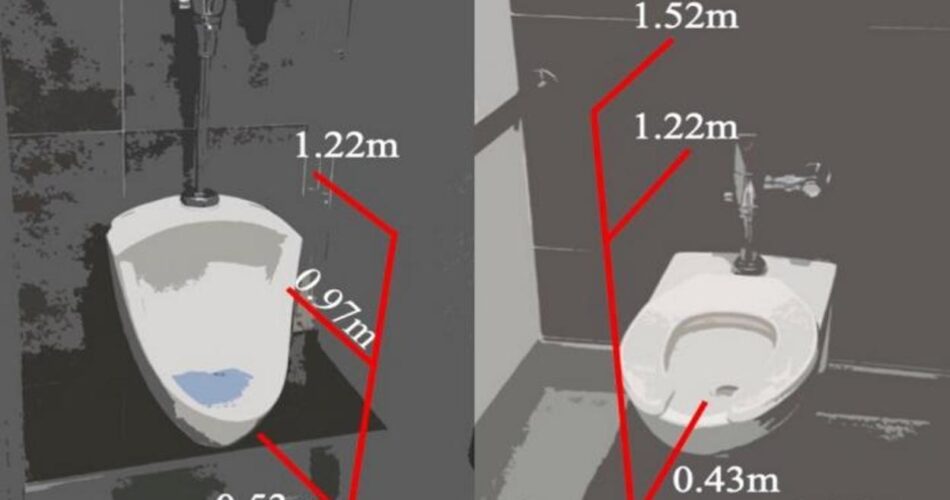Flushing releases lots of aerosolized droplets which may carry pathogens
We already talked about how flushing can spread lots of droplets in the air causing a real firework effect but now a team of scientists from Florida discovered that these microbe-containing aerosols disperse depending on the design, water pressure, or flushing power of the toilet. They also found a large variety of pathogens that can cause severe diseases like ebola, for example.
The team of scientists from Florida Atlantic University’s College of Engineering and Computer Science investigated droplets generated from flushing a toilet and a urinal in a public restroom under normal ventilation conditions and they used a particle counter placed at various heights of the toilet and urinal to measure the droplets, to capture the size and number of droplets generated upon flushing.
The results, published in the journal Physics of Fluids, demonstrated how public restrooms could represent hotbeds for airborne disease transmission, especially if they don’t have adequate ventilation or if toilets don’t have a lid or cover. Most public restrooms in the United States often are not equipped with toilet seat lids as well as urinals, of course.
For the study, researchers got data from 3 different scenarios:
- toilet flushing;
- covered toilet flushing;
- urinal flushing.
They examined the data to determine: the increase in aerosol concentration, the behavior of droplets of different sizes, how high the droplets rose, and the impact of covering the toilet. Moreover, ambient aerosol levels were measured before and after conducting the experiments to see the differences.
“After about 3 hours of tests involving more than 100 flushes, we found a substantial increase in the measured aerosol levels in the ambient environment with the total number of droplets generated in each flushing test ranging up to the tens of thousands”, said Siddhartha Verma, Ph.D., co-author and an assistant professor in FAU’s Department of Ocean and Mechanical Engineering. “Both the toilet and urinal generated large quantities of droplets smaller than 3 micrometers in size, posing a significant transmission risk if they contain infectious microorganisms. Due to their small size, these droplets can remain suspended for a long time”.
The droplets were detected at heights of up to 5 feet (1,52 m) for 20 seconds or longer after starting the flush. Researchers also detected that a smaller number of droplets were in the air when the toilet was flushed with a closed lid, although not by much because aerosolized droplets escaped through the small gaps between the cover and the seat.

“The significant accumulation of flush-generated aerosolized droplets over time suggests that the ventilation system was not effective in removing them from the enclosed space even though there was no perceptible lack of airflow within the restroom”, said Masoud Jahandar Lashaki, Ph.D., co-author and an assistant professor in FAU’s Department of Civil, Environmental and Geomatics Engineering.
“Over the long-term, these aerosols could rise up with updrafts created by the ventilation system or by people moving around in the restroom”, added he.
- There was a 69.5% increase in measured levels for particles from 0.3 to 0.5 micrometers.
- A 209% increase for particles from 0.5 to 1 micrometer.
- A 50% increase for particles sized 1 to 3 micrometers.
Apart from the smallest aerosols, comparatively larger aerosols also pose a risk in poorly ventilated areas even though they experience stronger gravitational settling. They often undergo rapid evaporation in the ambient environment and the resulting decreases in size and mass, or the eventual formation of droplet nuclei, can allow microbes to remain suspended for several hours.
“The study suggests that incorporation of adequate ventilation in the design and operation of public spaces would help prevent aerosol accumulation in high occupancy areas such as public restrooms”, said Manhar Dhanak, Ph.D., co-author, chair of FAU’s Department of Ocean and Mechanical Engineering, and professor and director of SeaTech.
“The good news is that it may not always be necessary to overhaul the entire system since most buildings are designed to certain codes. It might just be a matter of redirecting the airflow based on the restroom’s layout”, he specified.
During the 300-second sampling, the toilet and urinal were flushed manually 5 different times at the 30, 90, 150, 210, and 270-second, with the flushing handle held down for 5 consecutive seconds. In addition, the restroom was deep cleaned and closed 24 hours before conducting the experiments, with the ventilation system operating normally. The temperature and relative humidity within the restroom were 21° Celsius (69.8° Fahrenheit) and 52%, respectively.
Study co-authors are Jesse H. Schreck, first author and a graduate student in the Department of Ocean and Mechanical Engineering; and Javad Hashemi, Ph.D., associate dean for research and a professor in the Department of Ocean and Mechanical Engineering.
In short, according to what has been said, we will probably need some sort of flush with suction placed directly in the toilets to get cleaner air in public bathrooms, a bit like what happens in airplane toilets.
Source yubanet.com

